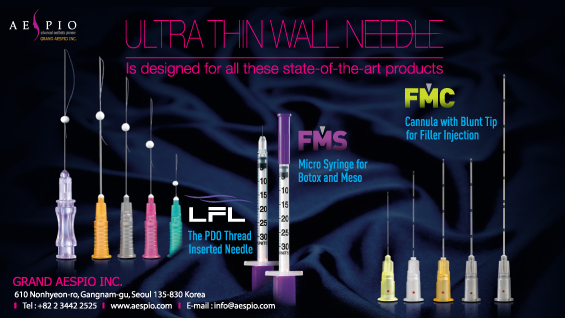Prevention and treatment of necrosis
As with all treatments, prevention of necrosis is more important than treatment. Use a needle of at least 23 gauge. Target deeper layers if possible, however, try to avoid the dermis and vascular layers. When injecting close to the surface, limit the injections to one block to avoid damaging the blood flow of nearby tissues. Think of the filler as a solid implant and try to limit its spread. This is how I use dermal filler while lowering the risk of blood flow obstruction.
Once injected correctly, the filler should be observed for safe placement in the tissues. Pay close attention to filler’s properties and watch for signs of swelling, possibility of dissolution after injection, and migration into surrounding tissues. Observe initial swelling and any changes in the first 24-48 hours, as serious necrosis could develop or could be resolved in this time period. If the doctor is experienced enough, he or she can detect signs of necrosis within the first 24 hours and take appropriate measures.
Signs of ischemia that can develop into necrosis include pain and redness. Some mistake the whitening of the skin during injection as a sign of ischemia. This is a temporary phenomenon during aggressive injection and disappears immediately when the doctor adjusts the pressure of injection.
[Advertisement] ULTRA THIN WALL NEEDLE – Manufacturer: AESPIO(www.aespio.com)
Signs of ischemia that are dangerous include symptoms that occur during the post-injection placement of filler. Therefore, it is important to contact the patient in the first 24-28 hours to enquire about any discomforts, redness, and other anomalies. If the patient complains of redness accompanied with pain, decompression (dissolving a portion of the injected filler to lower the pressure) can solve the problem. On the other hand, if nothing is done, ischemic reaction weaken the protective mechanism and leads to inflammation. Bacteria form a precarious balance within the human body. When the protective mechanism is weakened the bacteria within the body can become toxic. This causes pustules to form and inflammatory reaction to take place. Signs of these appear within 48 hours of treatment or even in 36 hours in severe cases.
Pustules start to form by the time the patient makes the second visit. Draining and dressing the pustules resolve the issue in most cases. However, if left untreated, the buildup of pus can destroy the surrounding tissues, causing ischemia that develops into infectious necrosis. The pus sinks deeper and can eventually cause indentation. It takes only 10 days from the early signs of necrosis to indentation and treatments must be carried out during this period.
-To be continued





















